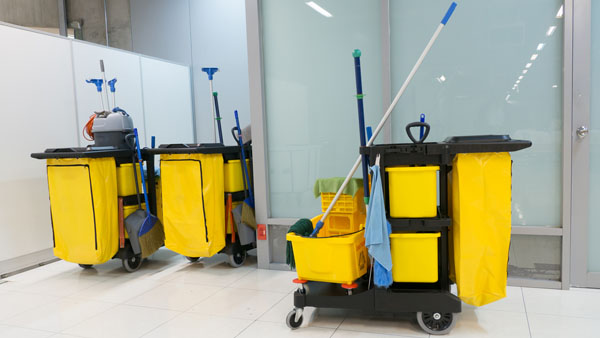Overall, the U.S. economy is showing improvement in employment, construction, and manufacturing. All of these factors help drive sales of professional cleaning products and make end users of these products slightly less price sensitive than during recessionary periods. However, in education, the emphasis is on steady—but slow—growth. For commercial construction and retail, the nation had somewhat overbuilt retail, and malls are struggling with e-commerce competition and closing or being repurposed for other uses. Facilities more subject to consumer confidence, such as lodging, foodservice, and recreation, are growing as a result of the improved economy. Fast-food restaurants have upped their game in terms of menu offerings and restaurant décor, which has helped them better compete with the fast-casual segment. In lodging, the rise of Airbnb and other Internet-based “private overnight rental” sites is becoming popular and taking some business from traditional hotels and motels. The overall floor care category has registered modest growth recently, primarily because end users have cut back on stripping, finishing, and waxing floors. Longer-lasting premium products and improved flooring technology also have an impact on spending and volume. However, since a clean floor is considered essential for overall facility cleanliness and appearance, the chemicals and tools used to keep floors clean are an important segment to monitor.
In the jan-san segment of the professional cleaning market, floor care cleaning chemicals account for nearly one-fourth of sales, but growth is slow with a compound annual growth rate (CAGR) of 1.4% over the past five years. This segment’s growth has slowed as end users are performing less frequent care and maintenance, such as stripping and finishing of floors, and most newer construction flooring materials require only basic care. By contrast, floor cleaning chemicals in the foodservice segment of the market grew by a CAGR of 2.4% over the same period due to stringent food safety and sanitization requirements. Floor care chemicals make up less than 7% of the total market for foodservice cleaning products. Growth of floor care chemicals among foodservice professionals is driven by strong demand from quick-serve restaurants, nursing homes, assisted living facilities, and lodging establishments.
In keeping with Kline’s continuous tracking of the professional floor care cleaning market, we are pleased to announce a new study to be published in early 2019, Floor Care Pads and Tools: U.S. Market Analysis and Opportunities. This comprehensive analysis of the market for floor care pads, microfiber, mop heads, buckets, and other tools used by cleaning professionals includes end users’ usage patterns, market trends and sales, and market share of leading suppliers. This new report is designed to be used as a companion report to Janitorial and Housekeeping Cleaning Products and Foodservice Cleaning Products where floor cleaning chemicals are profiled. We are now accepting charter subscribers through mid-August who will have the opportunity to weigh in on the scope of the study and review and revise the structured survey to be used with end users. Contact us to learn more.

